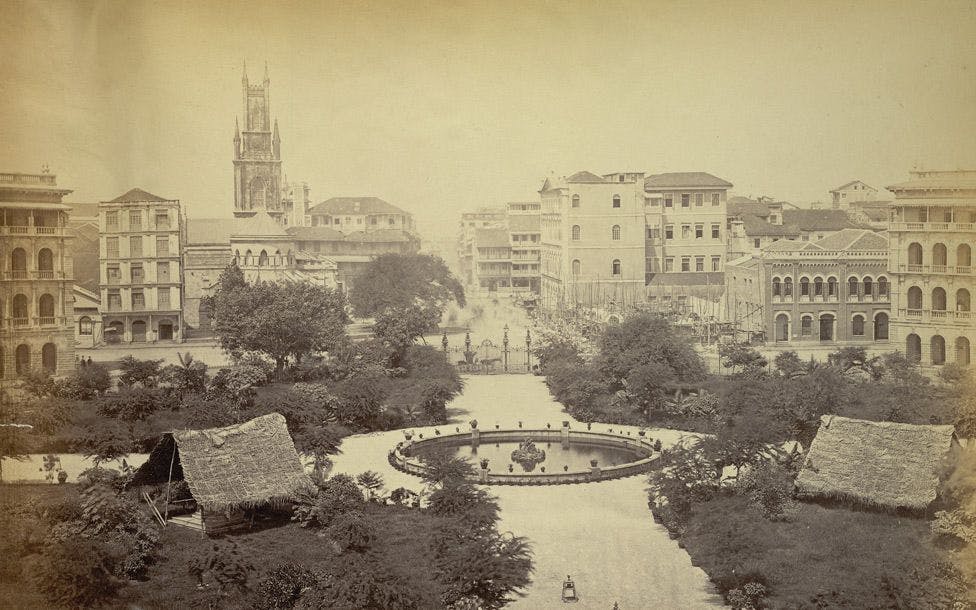Horniman Circle: India’s Tribute to a Friend
BOOKMARK
Mumbai’s Horniman Circle is an exception, dedicated to an exceptional man. It is one of the very few landmarks named after a British man, in post-independence India. And it is apt. After all the feisty Benjamin Horniman, the Editor of the Bombay Chronicle was the man who took the horrors of the Jallianwala Bagh massacre to the world, defying all British attempts at a cover-up.
– Benjamin Horniman took the horrors of the Jallianwala Bagh massacre to the world.
Benjamin Horniman was an Irish born British journalist and editor who was a staunch supporter of India’s independence movement and was also bold enough to crusade for it with the might of his pen. Born in Sussex, England to Irish parents in 1873 Horniman developed a fascination for India when he was a young boy and decided to make a career here. Horniman’s first job in India was that of an editor with The Statesman, published from Calcutta and from the start his articles were highly critical of the government and its attitude to Indians. He highlighted its inefficiency in managing communal riots and uprisings, following the Bengal partition of 1905.
In 1910, Sir Pherozeshah Mehta, a prominent nationalist leader had started an English newspaper called The Bombay Chronicle, as he felt that other English newspapers were generally pro-British and biased against the Indians. It was Surendranath Bannerjee, a founder member of the Indian National Congress and one of the earliest political leaders of modern India, who recommended Benjamin Horniman for the position of editor for The Bombay Chronicle and Horniman took up the offer.
– Sir Pherozeshah Mehta started an English newspaper called The Bombay Chronicle.
Horniman wrote on every relevant issue in British India. His pen spared no one and he wrote against the viceroys, the British officers as well as the British Prime Ministers. Though his writing struck a chord with leaders who were considered ‘extremists’ by British standards like Tilak, moderates like Gandhi also supported his regime. As a result of his bluntness, Horniman made many enemies but none of them managed to bring him down.
However, it was the horrific Jallianwala Bagh massacre on 13th April 1919 which would make Horniman a household name across India. Martial law was in place in Punjab and the British government had pulled out all stops to suppress the news of this horrific massacre from spreading to the rest of the country. Lala Govardan Das, a local businessman, filed an eyewitness account of the tragedy and Horniman published the details in his newspaper and broke the news to a shocked and horrified nation.
– Horniman published the details of the Jallainwala Bagh massacre in his newspaper and broke the news to the nation
Horniman wrote in detail about the atrocities of the regime and roused public anger. When the paper was bought by the soldiers too, the officials understood the danger and felt that Horniman could make rebels out of the Indian soldiers. Thus, under the Defence of the Realm Act of 1914 which was passed in the United Kingdom as an authoritarian social control mechanism, Benjamin Horniman was deported back to England. As a response to the deportation, Gandhi declared May 11, 1919, as Horniman Day, and called for a hartal (strike).
The strict censorship had prevented the news of the Jallianwala Bagh massacre from reaching London. However, Horniman managed to smuggle with him to London, images of the aftermath of the tragedy which when published in The Daily Herald, created a huge outrage.
– Horniman smuggled images of the Jallianwala Bagh tragedy and published them in The Daily Herald in London
For seven years, Horniman stayed in England and wrote several articles in The Catholic Herald. The British authorities in India banned the paper so he sent clippings of the articles through personal letters to friends in India. These articles were then reproduced in The Bombay Chronicle.
In 1926, Horniman was back in India due to a loophole in his deportation order. He edited a number of publications between 1927 and 1932 for The Indian National Herald, The Weekly Herald, The Daily Mail and The Sentinel. Horniman, throughout his stay in India, took part in numerous protests and also wrote about them from a nationalist viewpoint. His reports not only created an immense impact but also put the spotlight on grim ground realities for the public at large.
In 1941, Horniman left The Bombay Chronicle and founded Blitz with Russi Karanjia. He passed away in 1948, after which, the Horniman Circle in Mumbai was named after him to honour the memory of a man who chose his humanity over his nationality.
The Horniman Circle, earlier known as Elphinstone Circle, is set on the site of erstwhile Bombay Green, in front of the Asiatic Society. The Elphinstone Circle marked the first planned garden circle of the city completed in 1843.










